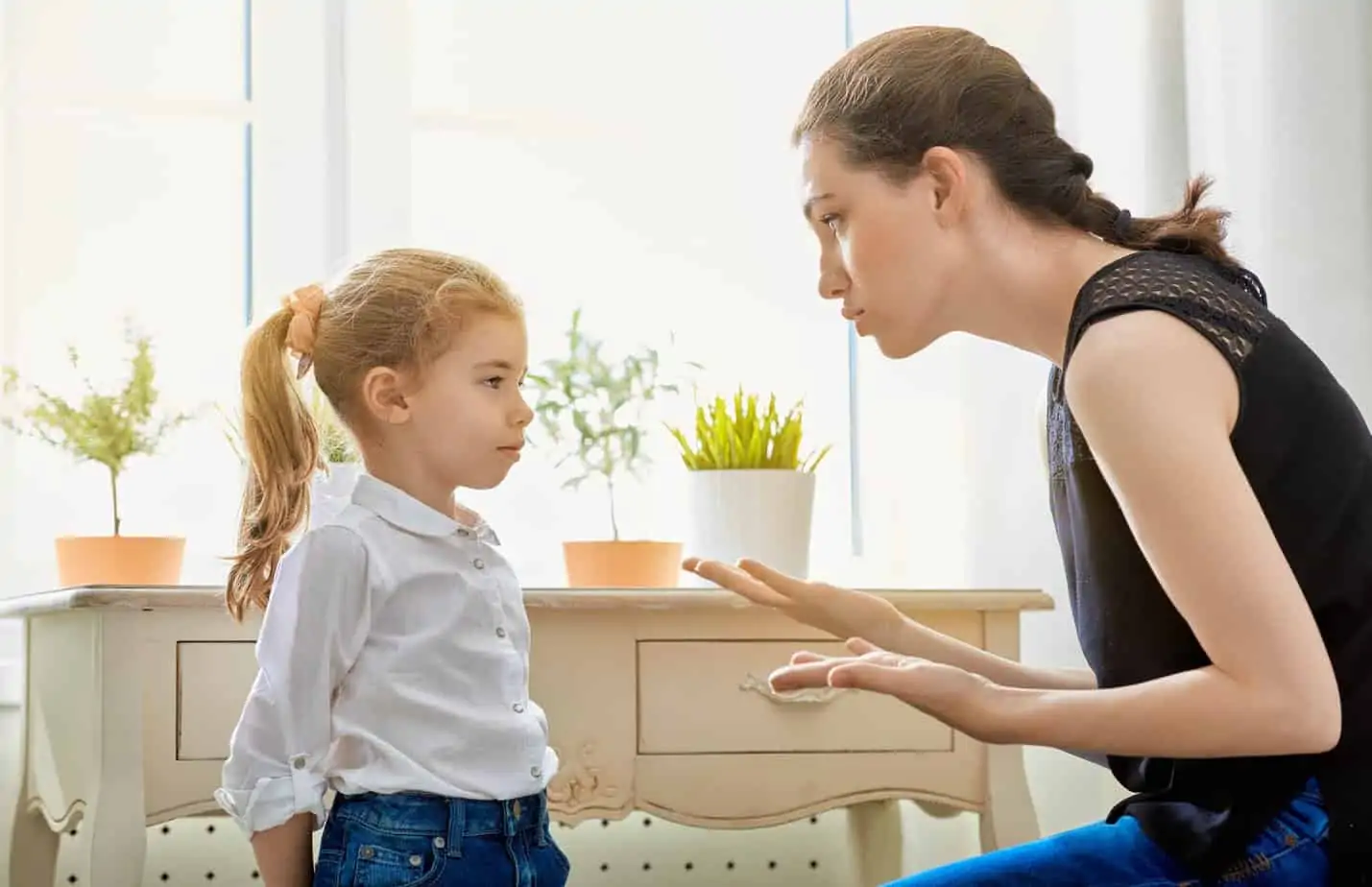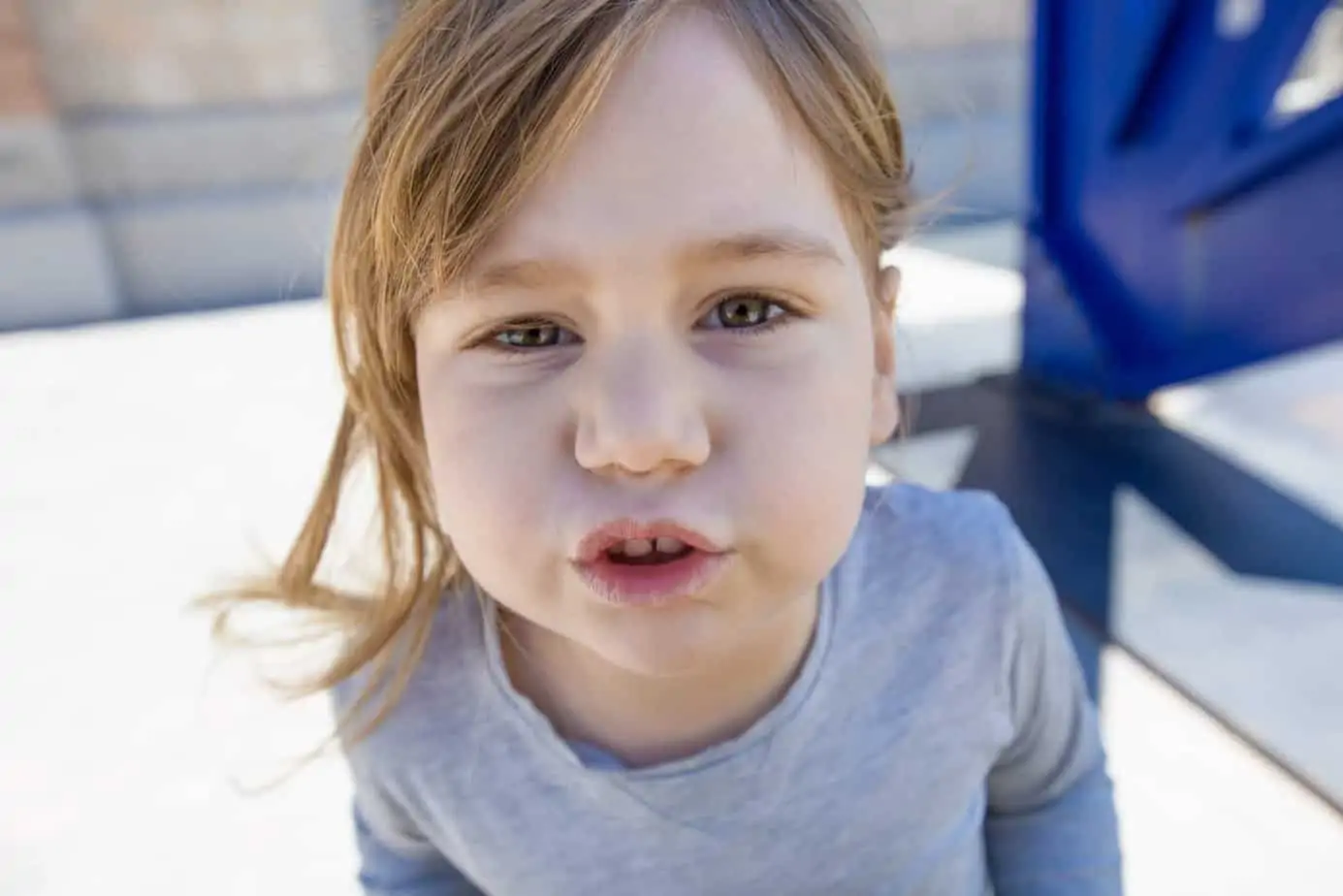Teaching kids the value of respect in a rude world. How to navigate disrespectful behavior without yelling. Teaching kids respect in 8 simple ways.

Teaching Kids Respect in a Rude World
Earlier this year, I experienced a new point in parenthood where my kids began rolling their eyes, talking back, copping an attitude and sometimes outright ignoring me when they’re told no or didn’t get what they wanted.
Ugh, the disrespect and rudeness!
It was maddening.
Which, if you know me or my husband, you know this type of behavior doesn’t fly in our home. Using manners and respecting those in authority, whether at home or in public, is a really important, and basic principle we want to instill in our children.
Soon after my twins started 2nd grade, they each came down with case of bad attituditis.
Basic manners they had mastered at the age of two like, “Please,” “Thank You” and “May I” seemed to have disappeared from their vocabulary all together.
“Can I please have a snack?” turned into “where’s my snack” after school.
Or, “thank you for dinner Mom” changed to “ugh, I think I’m going to barf!”
What about ultimatums? Do you have those in your house, boy did we! A couple that stand out were the ultimatum my son gave me when he lost one of his toys for hitting his sister and said, “if you don’t let me play with my toy, I’m not going to make my bed.”
Here’s another one overheard from the backyard between my girls; “If you don’t play the game I want to play, I’m not going to play with you at all!”
2nd grade was also the time they started learning works like stupid, dumb, jerk and lame, which when they put into the context of “this dumb game is so stupid” isn’t cool with this Mama.
When it was said during a round of family UNO one night, my husband and I looked at each other, declared the game over and had an impromptu talk about respect.
It wasn’t long before we turned things around, and I’ll touch on all the 8 ways that worked for us, so if you have the same “bad attitudeitis” in your house, you can kick it to the curb too!
Demand Respect and Squash the Disrespect
All this disrespect, manipulation, and copping an attitude had me annoyed and frustrated.
Showing respect for others should be a basic value all children are taught, but unfortunately when others are around who don’t have the same values, disrespect can spread like the flu during cold season.
I asked myself, What had happened to the respectful children I was raising? Where did we go wrong?
The thing is… disrespect has become a larger societal problem than we realize, and it’s being picked up by our children at school, practice and on the playgrounds.
While we were doing a lot of things right at home, we were also letting certain behaviors slide. When the kids went to school and picked up new things, it made the attitudes, the talking back and disrespectful behavior even worse.
Acting disrespectfully is another manipulation to help kids get what they want, just like crying and fussing worked as babies.
Think about it, from the time babies arrive, all they know how to do to ask for what they need, is to cry, scream, whine and fuss. It works because thats their only way of communicating until they learn otherwise.
(Psst…. emotion picture cards worked like magic when it came time to teach my three kids how to recognize, name and communicate what they were feeling.)
As they grow and their brains continue to develop, it then becomes a parent’s job to teach them how to talk, act and behave in respectful ways to get their needs met that don’t involve ways that worked for them as babies.
The most effective way to teach kids respectful behavior is to model it yourself, says Victoria Kindle Hodson, coauthor of Respectful Parents, Respectful Kids.
When we teach and model respectful behavior, we’ll end up imparting basic lessons about kindness, consideration, honesty, and empathy, as well as gratitude.
While you may start off with a strong foundation of manners and behavior, it’s easy for kids to get off track when they’re around others, but fortunately, it’s just as easy to get back in line with a little help from Mom and Dad.
We were able to turn things around at our home fairly quickly.
Here’s the cliff notes versions of what worked, but read on for the full detail on all 8 ways to teach kids respect below:
- Re-teaching good manners and praising them for polite behavior.
- Setting behavior expectations before we went anywhere.
- Acting quickly to curb disrespectful behavior when we saw or heard it. Waiting doesn’t do anyone any good and especially doesn’t teach any important lessons!
- Openly talked about respect and reinforced it with books, movies, and family discussions about being open-minded.
- You’ve got to give respect to earn respect.
Here are 8 simple, yet highly effective ways to teach kids respect and how to act politely.
1) Demand Good Manners
Teaching manners begins with toddlers and isn’t a fleeting formality. Being polite when taught early and consistently becomes an ingrained basic way of existing in this world.
When you help your child learn cues, and praise them for their good manners, you’ll be able to reinforce their behavior.
Once my husband and I noticed manners they’d long been familiar with were missing in our day-to-day interactions, we spent a lot of time reminding them to say “please” or “thank you” and asking them to help hold the door open for others, and then praising them afterwards. We also explained why manners are important and how much we appreciated their politeness and soon, we were back on track.
We still praise them and catch them using their manners, so we don’t slip again in the future!
- Saying “thank you” after something is received, given or exchanged.
- Using the word “please” when you’re asking for help or would like to receive something you want or need.
- Looking people in the eye when you greet them or if they’re talking to you. (Once toddlers master please and thank you, then begin working on eye-contact.)
- Greeting others with “hello” or “goodbye” as well as responding to someone when they greet you.
- Saying “I’m sorry” or “excuse me.”
- Holding the door open for others.
- Not speaking over others, but waiting until it’s their turn to talk.
2) Set Realistic Expectations for Your Child
It’s helpful to set limits beforehand. When you’re going out in public, review your expectations and what appropriate manners are.
For example, if you’re going to a restaurant, talk about what the proper manners are for having a meal at a restaurant and a consequence if they don’t act appropriately. Just be prepared to follow through with the consequence if you have to.
Setting expectations ahead of time, lets your children know what you expect of them. If they do a great job and there aren’t any problems, certainly praise and give them credit.
You can also set boundaries for playtime, around the house, etc.
Kids have to learn the world doesn’t revolve around them and they must consider others with their actions.
“If they can’t follow your house rules, they won’t be able to do it in kindergarten and beyond,” says Dr. Schweiger, author of Self-Esteem for a Lifetime: Raising a Successful Child from The Inside Out. “By allowing them to do whatever they want, without consequences, you’re setting them up for failure later on. So it’s important to instill a regard for authority in your little ones, starting at home.”
3) Put a Stop to Rude Behavior
Every time I volunteer in my children’s classrooms, I overhear bratty behavior like name calling and foul language. Unfortunately, this kind of behavior is pretty common these days, and because of this, it’s easy to brush over it, and then ignore it before moving on with our day.
The problem is that when we wash over this kind of behavior simply by rolling our eyes or because we have such busy lives and it makes it hard to respond immediately to our children’s every moves, it creates an unintentional problem.
When theres’s no accountability for their behavior, we can’t expect it to stop.
We’re allowing our kids to speak this way to their friends, family and even other authority figures because they think it’s okay to cop an attitude and sass other people.
That’s why it’s vital to nip this kind of behavior in the bud and teach kids disrespectful behavior is never acceptable.
If your ‘re unsure if your child is crossing a line, ask yourself this question and see how you feel.
“Would I let my friends talk to me this way? Would I let my neighbor talk to me this way? Would I let my partner talk to me this way?
If the answer is no, then your child shouldn’t be speaking to you this way either and it’s time to teach this type of behavior is unacceptable.
Stand up and and say:
“We don’t speak to each other that way in this family.”
It’s important that if you see your child being disrespectful, to try to nip it in the bud quickly.
4) Respectfully Correct Your Child
If your child is being disrespectful, and you need to correct them, there’s no need to yell or snap at them.
Choose to see this as an opportunity to teach them how to be respectful, but being that yourself. Having an attitude of your own in response to theirs, is not at all helpful. In fact, it’ll only escalate the situation and cause even more disrespectful behavior.
Instead, give your child a clear understanding of what’s acceptable. To be an effective teacher, you don’t have to embarrass or shout at them. If you’re in public or with friends or family, put your child aside to talk to them.
This is a teachable moment, and when you make your expectation firm and clear, as well as a related consequences if the behavior continues, then you can move ahead. If you do have to follow through with the consequence, be prepared to do so, but still in a respectful way without yelling or shouting.
Be sure you’re in front of your child, looking at them when you speak and connect. Shouting a command from another room makes it easy to ignore (I’m sure you’ve seen how well kids don’t listen to you when you don’t ask them nicely or standing in front of them) and it’s being disrespectful to your child.
You can’t be a role model for your child if you’re not being kind, having self-control and being respectful.
Related Article: Consequences for Kids: Why Some Work & Others Never Do
5) Teach Kids Healthy Ways to Express Themselves
When you talk to a child about why they’re mad, jealous, angry, annoyed, etc. although it’s never acceptable to lash out at another person, you can help them express their feelings using I Feel Statements.
- I feel frustrated because…
- I feel jealous because…
- I feel angry because…
Using emotion picture cards can help kids figure out what they’re feeling and even to communicate with you about what’s going on.
Steer clear or finger-pointing statements that being with You or a Name, encourages kids to put feelings into words.
- You are being a jerk…
- You are mean!
- Sally is a brat…
The best thing to do is listen and be a sounding board, correcting your child to use I Feel Statements if you need, but listening and empathizing with their feelings so you validate them and show you’re on their team.
- You really sound mad, can you tell me more about what’s going on?
- You must be really angry right now, can you describe what happened to make you so mad?
6) Keep an Open Mind
Treating others with respect means accepting you’re not going to get along with everyone, or even like them – and that’s okay, but you’re still polite and open to seeing where they’re coming from.
Keeping an open mind allows kids to have a fresh way of looking at things – life, diversity, activities, new friends, etc. Learning other people’s points of view, interests, and hobbies can expose them to new ways of thinking, and who knows, they may even make a connection on that journey of discovery.
Think of your kid’s curiosity as an opportunity to teach him about respecting differences.
There’s more than one way to do something, or think of something and keeping an open-mind will serve your child way as a lifelong skill.
The same is true with diversity. Other children may not look the same as your child, but being respectful and having an open mind allows your child to learn we’re not al the same and that’s not a bad thing.
Your job as a parent?
To teach your child that even if they aren’t friends with another child, they still deserve the same respectful treatment as someone who is their friend or family member.
It’s important to expose kids to diverse cultures, ethnicities, foods, books with different characters, and traditions so they explore things that are different than what’s in their own surroundings, and see the bigger world as a place brimming with possibility and discovery.
7) Teach Kids to Respect Belongings and Material Things
Having a boy who likes to take apart, rebuild and construct items from around our house, teaching him to respect our belongings has been a many-years long process.
When we teach children how to treat the home and their belongings with respect, we can give them a greater consideration for all the hard work that went into those purchases, as well as a sense of gratitude.
How to teach respect of home & belongings:
- Explain to children what gives something worth. If your child takes a ball from the neighbor’s yard without asking, without getting angry, explain why that ball is important to neighbor and that it belongs to him. Another example is picking flowers from your neighbor’s yard, and explaining that she plants the flowers to make her yard beautiful and if the flowers are picked, she won’t be able to look out and see flowers she worked hard to plant any longer.
- Less is always more when it comes to playthings. The less items they have, the more they’ll appreciate and value them.
- Lay out your rules for using objects in your home. If your child is holding a snow globe for example, explain that they have to hold with two hands to gently rock it, but don’t shake it and don’t drop it.
8) Model Respectful Behavior
You’ve got to give respect, to earn respect.
What better way to teach a behavior than modeling the behavior you want to teach?
Show them how to respect by respecting them. I don’t mean calling them sir or madam, or bowing to them. Just treat your child as a person in the same way you treat other grownups.
For example, respect their preferences.
I’ve heard a father yell at his son for eating the inside of a pie first before the crust because that was the wrong way to eat a pie. True story.
t is ridiculous how some parents want to have complete control over their child’s behavior and preferences. Most of us are not this extreme but we still do some variations of preference policing. But if you want your child to respect you, start with respecting their choices.
Everyone has their own preferences. As much as I want my little one to be a mini-me and like exactly the same things I do, she is not. My child has her own liking. If I don’t like what she wants, I will explain my rationale. But ultimately, she has to learn to make decisions for herself. As long as her choice is not a danger to safety or health, is not (too) financially consuming and does not hurt others, I honor it.
That is why I let her make her own choices in things such as her own outfits. She often ends up going to her preschool wearing mismatched socks, pajamas under dresses, a shirt under/over a dress, etc.
Every person has the right to think independently and like different things. That should include children.
When children’s differences are accepted, they feel heard and respected. They see first-hand how to treat others who have different opinions. They learn that they should respect people despite their differences.
This understanding and tolerance for differences will become especially important when the teenage years come. That’s when everything Mom and Dad say will sound stupid to them and you want your child to know how to tolerate and still respect you!
More Resources on Positive Parenting & Teaching Respect to Kids:
- 6 Positive Parenting Techniques to Use Rather Than Yelling
- 6 Steps to Handle Backtalk & Peacefully Discipline Children
- Consequences for Kids: Why Some Work & Others Never Do
- How to Get Kids to Listen Without Yelling
- 5:1 Rule of Parenting: Shift Your Kid’s Behavior from Negative to Positive
Want even more?
Shop All Parenting Resources
Shop all of our parenting resources from self-regulation tools and managing big emotions to building self esteem and confidence. There are resources for all seasons of life!











